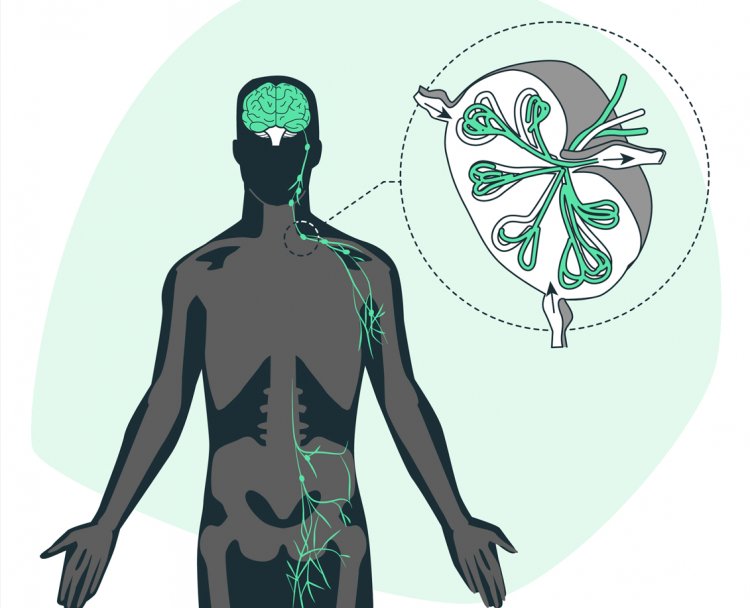Lymph Nodes: Understanding Their Role, Causes of Swelling, Diagnosis, and Treatment
Lymph nodes, also known as lymph glands, are an integral part of the body's lymphatic system, playing a crucial role in immune function. These small, bean-shaped structures are distributed throughout the body and serve as filtering stations for lymph, a fluid that carries white blood cells, proteins, and other substances involved in immune responses. Understanding the anatomy, function, and potential issues related to lymph nodes is essential for maintaining overall health.

Anatomy and Function of Lymph Nodes
Lymph nodes are strategically located along lymphatic vessels, which form an extensive network throughout the body. Major groups of lymph nodes are found in areas such as the neck, armpits, groin, chest, and abdomen. Each lymph node contains immune cells, including lymphocytes, macrophages, and dendritic cells, which work together to identify and destroy pathogens, such as bacteria, viruses, and abnormal cells.
When foreign particles or antigens enter the body through tissues or lymphatic vessels, they are captured by dendritic cells and presented to lymphocytes within the lymph nodes. Lymphocytes then mount specific immune responses, producing antibodies to neutralize pathogens or activating other immune cells to eliminate threats. Additionally, lymph nodes filter lymphatic fluid, removing debris, dead cells, and cancerous cells to prevent their spread throughout the body.
Causes of Lymph Node Swelling
Swollen lymph nodes, or lymphadenopathy, occur when lymphocytes within the nodes become activated in response to infection, inflammation, or other immune challenges. Several factors can contribute to lymph node swelling, including:
Infections
- Bacterial, viral, fungal, and parasitic infections can trigger immune responses that lead to lymph node enlargement. Common infections associated with swollen lymph nodes include streptococcal pharyngitis (strep throat), mononucleosis, tuberculosis, and HIV/AIDS.
Inflammatory Conditions
- Autoimmune diseases, such as rheumatoid arthritis, lupus, and inflammatory bowel disease, can cause chronic inflammation and lymph node enlargement due to dysregulated immune responses.
Cancers
- Lymphomas, which are cancers of the lymphatic system, can originate within lymph nodes or develop elsewhere in the body and spread to nearby nodes. Metastatic cancers, including breast cancer, lung cancer, and melanoma, can also involve regional lymph nodes as the disease progresses.
Medications and Vaccines
- Certain medications, such as phenytoin (Dilantin) and allopurinol (Zyloprim), as well as vaccines, may induce immune reactions that result in transient lymph node swelling.
Diagnostic Evaluation of Enlarged Lymph Nodes
When evaluating swollen lymph nodes, healthcare providers employ a systematic approach to identify the underlying cause. Diagnostic methods may include:
Physical Examination
- Palpation of swollen lymph nodes to assess their size, tenderness, texture, and mobility. Examination of other body systems for signs of infection, inflammation, or malignancy is also important.
Medical History
- Detailed inquiry into the patient's symptoms, recent illnesses, travel history, exposure to infectious agents, and personal or family history of autoimmune diseases or cancer.
Laboratory Tests
- Blood tests to assess white blood cell counts, inflammatory markers, and specific antibodies or antigens associated with infections or autoimmune disorders. Serologic testing for viral infections, such as Epstein-Barr virus (EBV) or cytomegalovirus (CMV), may also be performed.
Imaging Studies
- Radiographic imaging modalities, including ultrasound, computed tomography (CT), magnetic resonance imaging (MRI), or positron emission tomography (PET) scans, may be used to visualize lymph nodes and detect abnormalities, such as enlargement, necrosis, or infiltration.
Biopsy
- If initial evaluations are inconclusive or suggestive of malignancy, a tissue biopsy of the affected lymph node may be performed to obtain a definitive diagnosis. Biopsy techniques may include fine-needle aspiration, core needle biopsy, or surgical excisional biopsy, depending on the clinical scenario.
Treatment Strategies for Enlarged Lymph Nodes
The management of swollen lymph nodes depends on the underlying cause and associated symptoms. Treatment options may include:
Infectious Causes
- Antibiotic therapy for bacterial infections, antiviral medications for viral infections, and antifungal agents for fungal infections may be prescribed. Supportive care, such as rest, hydration, and pain relief, may also be recommended.
Inflammatory Disorders
- Corticosteroids or disease-modifying antirheumatic drugs (DMARDs) may be prescribed to suppress inflammatory responses and alleviate symptoms in autoimmune diseases, such as rheumatoid arthritis or systemic lupus erythematosus.
Cancer Treatment
- Depending on the type and stage of cancer, treatment options for lymphomas and metastatic cancers may include chemotherapy, radiation therapy, targeted therapy, immunotherapy, or surgical resection. Multidisciplinary collaboration involving oncologists, surgeons, radiation oncologists, and other specialists is often necessary to optimize patient care.
Monitoring and Surveillance
- In some cases, particularly when the cause of lymph node enlargement is unclear or when conservative management is appropriate, close monitoring and surveillance may be recommended to track changes in lymph node size, symptoms, or disease progression over time.
Conclusion
Lymph nodes play a vital role in the body's immune defense mechanisms, serving as dynamic filters and surveillance centers for immune responses. Swollen lymph nodes can indicate underlying infections, inflammatory conditions, or malignancies, necessitating a comprehensive diagnostic evaluation and tailored treatment approach. By understanding the anatomy, function, and diagnostic principles related to lymph nodes, healthcare providers can effectively manage patients with lymphadenopathy and optimize clinical outcomes. Collaboration between clinicians, pathologists, radiologists, and other healthcare professionals is essential to facilitate accurate diagnosis, appropriate treatment selection, and supportive care for individuals with enlarged lymph nodes.
Disclaimer
The information provided in this article is for educational purposes only and should not be considered medical advice. If you have any health concerns or are experiencing symptoms, it is important to consult with a healthcare professional, such as a doctor or clinic, for proper diagnosis and treatment. Always seek the advice of your doctor or other qualified health provider with any questions you may have regarding a medical condition. Do not disregard professional medical advice or delay in seeking it because of something you have read in this article.
Hashtags
#LymphNodes #Health #ImmuneSystem #MedicalAdvice #Healthcare
What's Your Reaction?





















